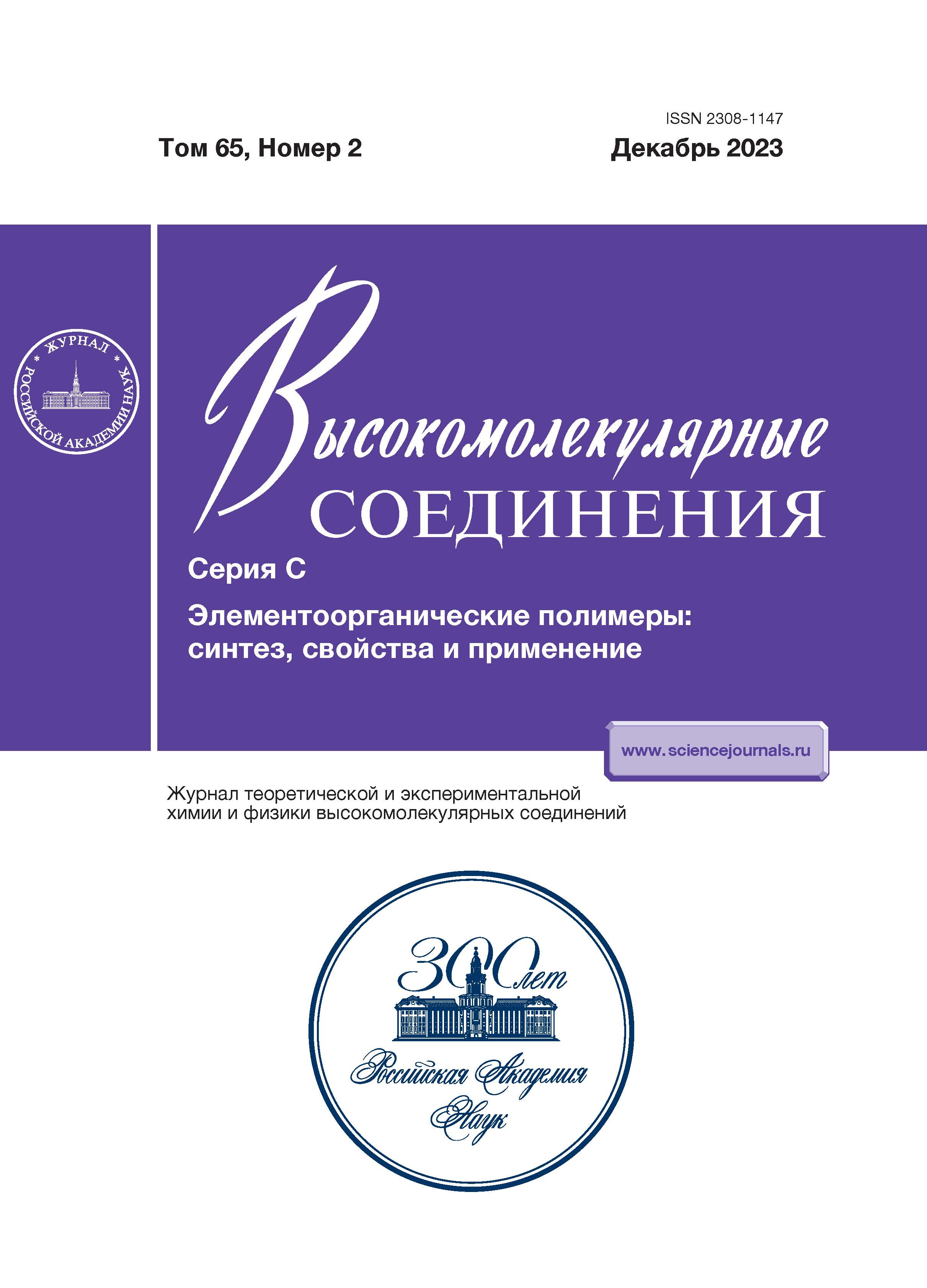Functionalized Oligoaryloxycyclotriphosphazenes and Noncombustible Binders Based on Them
- Authors: Bilichenko Y.V.1, Thuan P.V.1, Borisov R.S.1,2, Kolenchenko A.A.1, Kireev V.V.1
-
Affiliations:
- Mendeleev University of Chemical Technology
- Topchiev Institute of Petrochemical Synthesis
- Issue: Vol 65, No 2 (2023)
- Pages: 158-163
- Section: Articles
- URL: https://medjrf.com/2308-1147/article/view/674791
- DOI: https://doi.org/10.31857/S2308114723700346
- EDN: https://elibrary.ru/HYBZXK
- ID: 674791
Cite item
Abstract
Carboxyl-containing aryloxycyclotriphosphazene (I) has been used for curing the ED-20 epoxy resin or a phosphazene-containing epoxy oligomer. In the case of ED-20, curing occurs in the range of 125‒220°C and is accompanied by an exothermic effect that increases from 26 to 50 J/g with an increase in the amount of aryloxycyclotriphosphazene (I) from 25 to 50%. The curing of the phosphazene-containing epoxy oligomer occurs in the temperature range of 140–240°C and is accompanied by an endothermic effect (−ΔH = 6.5–6.8 J/g). Cured compositions based on ED-20 + I are self-extinguishing (flammability class V‑1 according to UL-94), and phosphazene-containing epoxy oligomer + I compositions are noncombustible (class V-0 according to UL-94) regardless of the ratio of the initial components.
About the authors
Yu. V. Bilichenko
Mendeleev University of Chemical Technology
Email: kireev.v.v@muctr.ru
125047, Moscow, Russia
Pham Van Thuan
Mendeleev University of Chemical Technology
Email: kireev.v.v@muctr.ru
125047, Moscow, Russia
R. S. Borisov
Mendeleev University of Chemical Technology; Topchiev Institute of Petrochemical Synthesis
Email: kireev.v.v@muctr.ru
125047, Moscow, Russia; 119991, Moscow, Russia
A. A. Kolenchenko
Mendeleev University of Chemical Technology
Email: kireev.v.v@muctr.ru
125047, Moscow, Russia
V. V. Kireev
Mendeleev University of Chemical Technology
Author for correspondence.
Email: kireev.v.v@muctr.ru
125047, Moscow, Russia
References
- Medici A., Fantin G., Pedrini P., Gleria M., Minto F. // Macromolecules. 1992. V. 25. № 10. P. 2569.
- Andrianov A.K. Polyphosphazenes for Biomedical Applications. New Jersey: Wiley, 2009.
- Liu J., Tang J., Wang X., Wu D. // RSC Advances. 2012. V. 2. № 13. P. 5789.
- Jaeger R.De., Gleria M. Phosphazenes: a Worldwide Insight. New York: Nova Science Publ., 2011.
- Kireev V.V., Bilichenko Y.V., Sirotin I.S., Filatov S.N. // Polymer Science B. 2022. V. 64. № 2. P. 89.
- Inoue K., Inoue Y. // Polym. Bull. 2001. V. 47. P. 239.
- Chistyakov E.M., Kolpinskaya N.A., Posokhova V.F., Chuev V.P. // Polymers. 2020. V. 12. № 5. P. 1176.
- Liu R., Wang X. // Polym. Degrad. Stab. 2009. V. 94. P. 617.
- Sirotin I.S., Bilichenko Yu.V., Solodukhin A.N., Kireev V.V., Buzin M.I., Borisov R.S. // Polymer Science B. 2013. V. 55. № 5–6. P. 241.
- Sarychev I.A., Sirotin I.S., Borisov R.S., Mu Jianxin, Sokolskaya I.B., Bilichenko J.V., Filatov S.N., Kireev V.V. // Polymers. 2019. V. 11. № 4. P. 614.
- Bilichenko Y.V., Pham Van Thuan, Borisov R.S., Kireev V.V. // Polymer Science B. 2022. V. 64. № 6. P. 855.
- Чурсова Л.В., Панина Н.Н., Гребенева Т.А., Кутергина И.Ю. Эпоксидные смолы, отвердители, модификаторы и связующие на их основе. СПб.: Профессия, 2020.
Supplementary files















